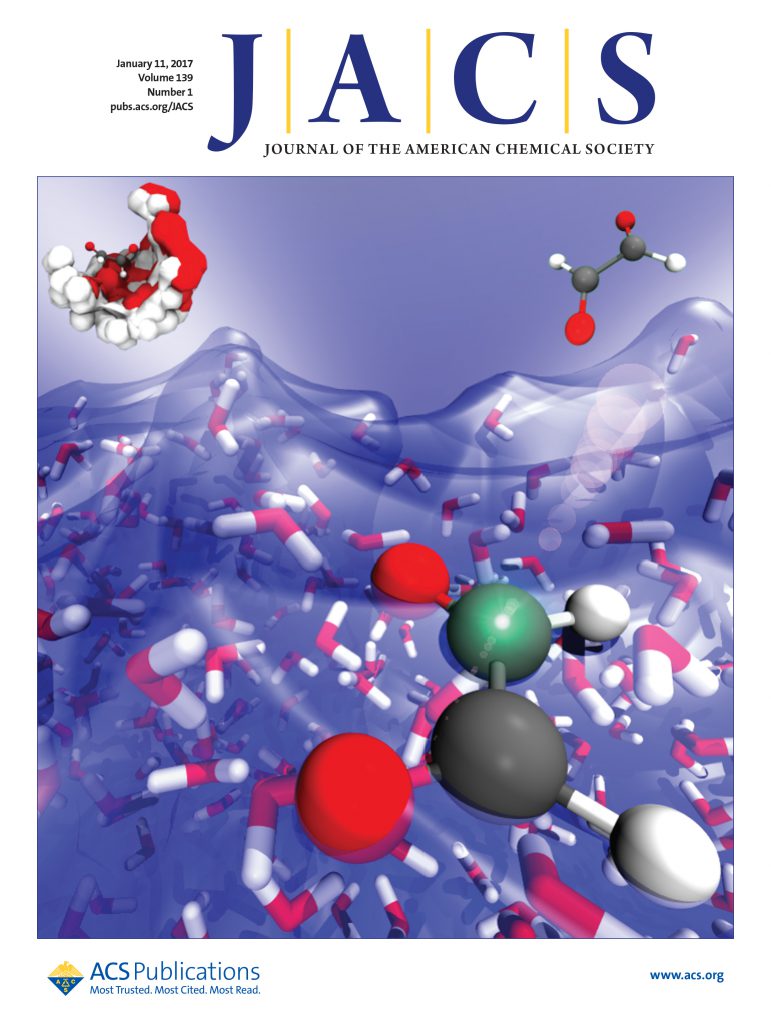Retraction of “Room Temperature Metallic Conductivity in a Metal–Organic Framework Induced by Oxidation”
IF 15.6
1区 化学
Q1 CHEMISTRY, MULTIDISCIPLINARY
引用次数: 0
Abstract
The authors retract this Article (DOI: 10.1021/jacs.9b06898) because reinvestigation of the conductivity data for the cobalt 2,3,6,7,10,11-triphenylenehexathiolate (CoTHT) metal–organic framework (MOF) determined that the anomalous temperature-dependent maxima reported were not due to metallic conductivity. Instead, it was found that ohmic contact was lost during cooling. This resulted in a significant reduction to the current passing between the electrodes, which could not be detected using the equipment available at the time. The conductivity data for the iron analogue FeTHT was not remeasured, but the authors consider that the anomalous temperature-dependent maxima is due to a similar effect. The authors note that the density functional theory (DFT) calculations, synthetic studies, synchrotron X-ray powder diffraction, modeling, Brunauer–Emmett–Teller (BET) measurements, scanning electron microscopy and atomic force microscopy, photoemission, and magnetic susceptibility measurements stand on their own merit. However, due to the misinterpretation of the conductivity data, the findings of the work are incorrect, and thus the paper is being retracted. The original Article was published on September 25, 2019 and retracted on April 10, 2025. This article has not yet been cited by other publications.“氧化诱导的金属-有机骨架中的室温金属导电性”的撤回
作者撤回了这篇文章(DOI: 10.1021/ jax .9b06898),因为对钴2,3,6,7,10,11-三苯基六硫酸盐(CoTHT)金属有机框架(MOF)的电导率数据的重新调查确定了报告的异常温度依赖性最大值不是由于金属电导率。相反,人们发现在冷却过程中欧姆接触丢失了。这大大减少了通过电极之间的电流,这是当时可用设备无法检测到的。铁类似物FeTHT的电导率数据没有重新测量,但作者认为异常的温度依赖性最大值是由于类似的影响。作者指出,密度泛函理论(DFT)计算、合成研究、同步加速器x射线粉末衍射、建模、布鲁诺尔-埃米特-泰勒(BET)测量、扫描电子显微镜和原子力显微镜、光电发射和磁化率测量都有自己的优点。然而,由于对电导率数据的误解,这项工作的发现是不正确的,因此该论文被撤回。原文发表于2019年9月25日,于2025年4月10日撤稿。这篇文章尚未被其他出版物引用。
本文章由计算机程序翻译,如有差异,请以英文原文为准。
求助全文
约1分钟内获得全文
求助全文
来源期刊
CiteScore
24.40
自引率
6.00%
发文量
2398
审稿时长
1.6 months
期刊介绍:
The flagship journal of the American Chemical Society, known as the Journal of the American Chemical Society (JACS), has been a prestigious publication since its establishment in 1879. It holds a preeminent position in the field of chemistry and related interdisciplinary sciences. JACS is committed to disseminating cutting-edge research papers, covering a wide range of topics, and encompasses approximately 19,000 pages of Articles, Communications, and Perspectives annually. With a weekly publication frequency, JACS plays a vital role in advancing the field of chemistry by providing essential research.

 求助内容:
求助内容: 应助结果提醒方式:
应助结果提醒方式:


